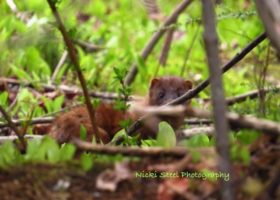
The Trials of Finding a Loon Nest Site
If all goes well, we’ll see over 80 pairs attempt to nest again this year despite the challenges of geese and mink and people.
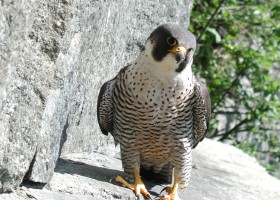
Cliff Tops and Overlooks Closed to Protect Nesting Falcons
Hiking Vermont’s hillsides is a great way to enjoy a spring day, but the Vermont Fish & Wildlife Department and Audubon Vermont recommend you check to see if the area you’re planning to hike or climb is open. Several cliff areas are currently closed to protect nesting peregrine falcons.
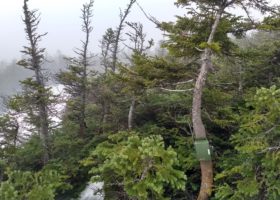
VCE Awarded 2017 TechGrant
From birds to bumble bees, salamanders to swallowtails, VCE biologists harness the power of technology to help solve complex wildlife conservation issues. A 2017 TechGrant award from the TechFoundation will now enable us to accomplish even more.
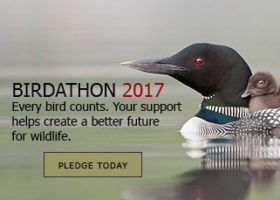
VCE Birdathon 2017: Every Bird Counts
On May 25, 2017, the VCE’s birding team, the Green Mountain Goatsuckers, will migrate to the southern Maine coast for our 24-hour birdathon blitz. Your support helps create a better future for biodiversity.
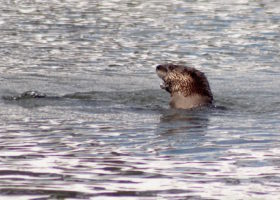
April 2017 iNaturalist Vermont Photo-Observation of the Month
Congratulations to Zac Cota for winning the April 2017 iNaturalist Vermont photo-observation of the month contest. His images of a North American River Otter frollocking and feeding on fish was the most popular photo-observation.
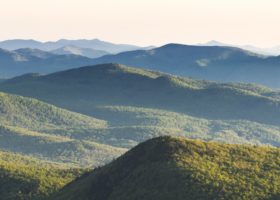
A Field Guide to May 2017
The month of May is a show-off. Woodland wildflowers jump out of the ground and demand attention. Trees flower and leaves burst from long-dormant buds. Birds arrive on southern night winds and liven the dawn with a chorus of song. May shouts of life and rejuvenation.
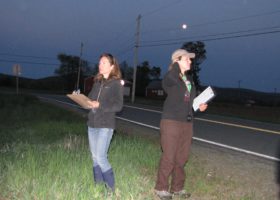
Help Us Discover Whip-poor-wills
Looking for something fun to do this spring and summer? Why not try night birding! Do you have an hour or so to spare for Eastern Whip-poor-wills in May or June? For years, some of our courageous volunteers have surveyed Whip-poor-will routes across Vermont on moonlit nights, but we need a few more adventuresome volunteers.
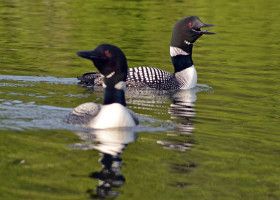
Help Us Look for Loons
You can help us help loons this year. And one way is to help us assess the breeding status of loons on some lakes and ponds this spring that are not often visited by volunteers. Learn more…
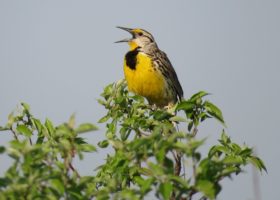
Grassland Birds Bring Home the Data
One year ago, some grassland birds became aerial backpackers. Their tiny backpacks acquired and logged GPS locations that have tracked their movements during the past year. Now, the birds have returned to their breeding grounds where it all started and the location data from the entire year were beamed up to Argos satellites and delivered to our laptops at VCE.
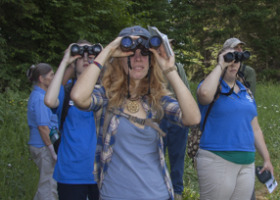
Bird-watching Opportunities Abound on Vermont’s Wildlife Management Areas
With spring finally here, bird watchers are dusting off their binoculars and heading out looking for birds as they migrate into Vermont from points south. And some of the Vermont’s best bird-watching opportunities are on the state’s 90 wildlife management areas, or WMAs.
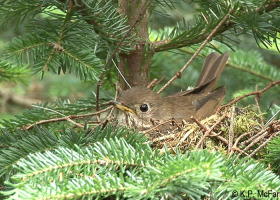
Saving a Rare Songbird – Hemispheric Conservation Action Plan for Bicknell’s Thrush Updated
The revised Conservation Action Plan for Bicknell’s Thrush provides the updated consensus of the International Bicknell’s Thrush Conservation Group (IBTCG), an alliance of scientists, conservationists, and governments, about the primary threats facing Bicknell’s Thrush and the actions that may help mitigate those threats across the hemisphere.
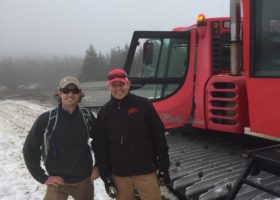
Monitoring Spring Phenology on Mount Mansfield
With deep snowpack on Mt. Mansfield remaining, yesterday we installed equipment that will monitor bird activity and the arrival of spring in the fir forest on the Mt. Mansfield ridgeline. Learn more about our phenology study…
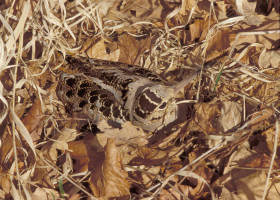
Outdoor Radio: The American Woodcock
The arrival of the American Woodcock is one of the exciting signs of spring in Vermont. Biologist Kent McFarland joined “The Mad Birders” on their annual Woodcock Walk in Moretown. Listen to the show.
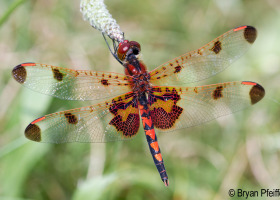
VCE Launches Damselfly and Dragonfly Atlas
The Vermont Center for Ecostudies (VCE) today launched an online atlas of damselflies and dragonflies, allowing anyone to report, track, study, discover or simply enjoy the charismatic insects.
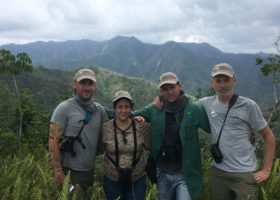
VCE’s Cuba Expedition a Resounding Success
VCE’s inaugural field trip to Cuba may not have yielded many Bicknell’s Thrush (2, to be exact), but it laid a strong foundation for our future work on this captivating island. We forged a promising partnership with our sister institute BIOECO, made many great friends, learned the ropes of conducting field there, and, yes, managed to see half of Cuba’s 26 endemics.
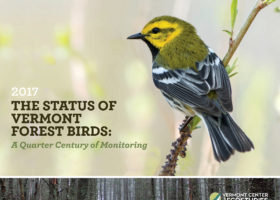
New VCE Study Reveals Decline in Vermont Forest Birds
VCE’s 25-year study of Vermont’s forest birds, including woodpeckers, warblers and other iconic species, has documented a 14.2 percent overall population decline during the period, raising concerns about birds and forests alike.
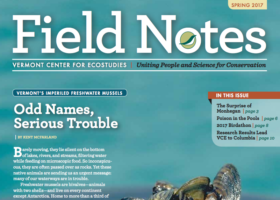
Spring 2017 Field Notes
VCE’s biannual Field Notes is out and it is full of amazing photos and fascinating stories. Click on the image in the post and download your copy today!
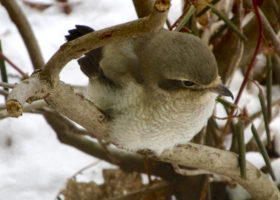
March 2017 iNaturalist Vermont Photo-Observation of the Month
Congratulations to Louis Megyesi for winning the March 2017 iNaturalist Vermont photo-observation of the month contest. The closeup of a Northern Shrike as it recovered from a window strike was the most popular photo-observation as measured by clicked ‘favs’.
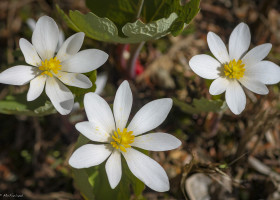
A Field Guide to April 2017
April leaves none of our senses void. The smell of earth, the sound of birds, the sight of wildflowers. Here’s our guide to some of the joys of April.
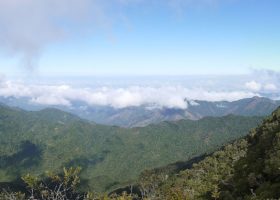
Cuba Next on VCE’s Horizon
Cuba is on VCE’s horizon, as Chris Rimmer and John Lloyd venture this week to the island’s eastern tip, in search of overwintering Bicknell’s Thrush. Backpacking to cloud forests of Sierra Maestra, where Fidel Castro famously hid out in the 1950s, and then venturing east to the serpentine forests of Humboldt National Park, they expect to find some thrushes, and a good number of Cuba’s 26 endemic birds.
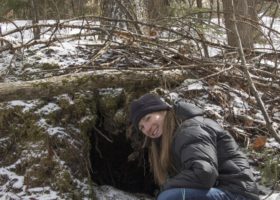
Outdoor Radio: Peering Into A Porcupine Den
VCE biologists Kent McFarland, Sara Zahendra and Steve Faccio ventured into the woods on a blustery day to see a porcupine den that was big enough for a human to fit in – but not someplace you’d want to venture!
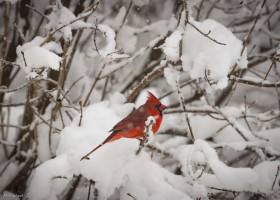
A Field Guide to March
March is a month of battles between warm and cold, between winter’s refusal to leave and spring’s insistence on coming. So, heralding the sun’s arrival, here’s a Field Guide to March.
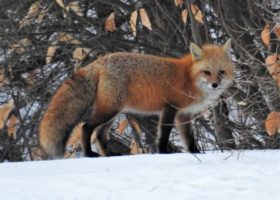
February 2017 iNaturalist Vermont Photo-Observation of the Month
Congratulations to JoAnne Russo for winning the February 2017 iNaturalist Vermont photo-observation of the month contest. Her image of a Red Fox starring the camera down on a winter day was the most popular photo-observation as measured by clicked ‘favs’.
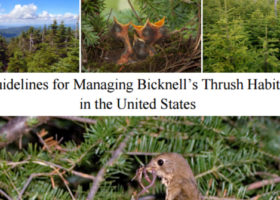
New Publication Available: Guidelines for Managing Bicknell’s Thrush Habitat in the United States
A new resource for planning the management and conservation of Bicknell’s Thrush habitat in the United States is now available at the International Bicknell’s Thrush Conservation Group web site.
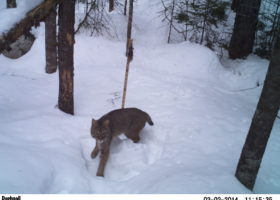
Outdoor Radio: The Elusive Lynx
Kent McFarland and Sara Zahendra traveled by snowmobile into the wilderness of the Northeast Kingdom with biologists from the Vermont Fish & Wildlife Department in hopes of spotting a Canada lynx or lynx tracks.
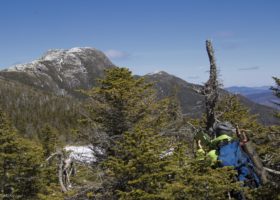
Stand Up for Science!
All of us, scientists and non-scientists alike, who believe in rationality, who believe that science can and should contribute to good decision-making and public policy, need to stand up and make our voices heard.
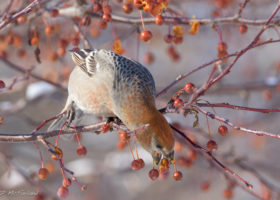
A Field Guide to February 2017
This month, wildlife and the rest of us here in New England will cross a threshold – arbitrary yet not insignificant: 10 hours of daylight. You can sense it when you head out in the morning: woodpeckers are starting to drum. Even though we’ve got lots more winter, we’ve also have change. So here’s a Field Guide to February to help get your hopes up, no matter what that groundhog predicted.
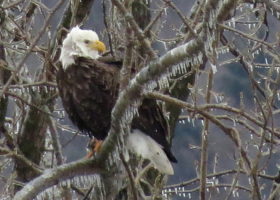
January 2017 iNaturalist Vermont Photo-observation of the Month
Congratulations to Charlotte Bill for winning the January 2017 iNaturalist Vermont photo-observation of the month contest. Bald Eagle populations have been slowly rising for decades in the Northeast and winter provides a great opportunity to see these majestic birds.
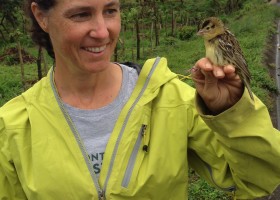
The Galapagos Gang: An Unusual Bobolink Stopover
What on earth are Bobolinks doing in the Galapagos Islands each autumn? In a somewhat risky mission to find out more, VCE and other biologists ventured to the island of San Cristóbal in an attempt to intercept migrating Bobolinks to find out more. Learn more about what they found on these isolated islands.
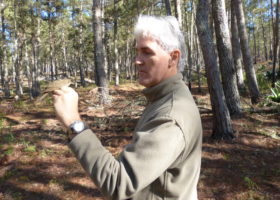
Farewell and Thanks to a Tireless Caribbean Conservationist
After 5+ years as VCE’s Caribbean Bird Conservation Coordinator, Juan Carlos Martinez-Sanchez is moving on to new adventures. All of us at VCE wish him well and offer him our profound thanks for a job extraordinarily well done. The personal energy and commitment that Juan Carlos poured into every aspect of his work were nothing short of remarkable.
